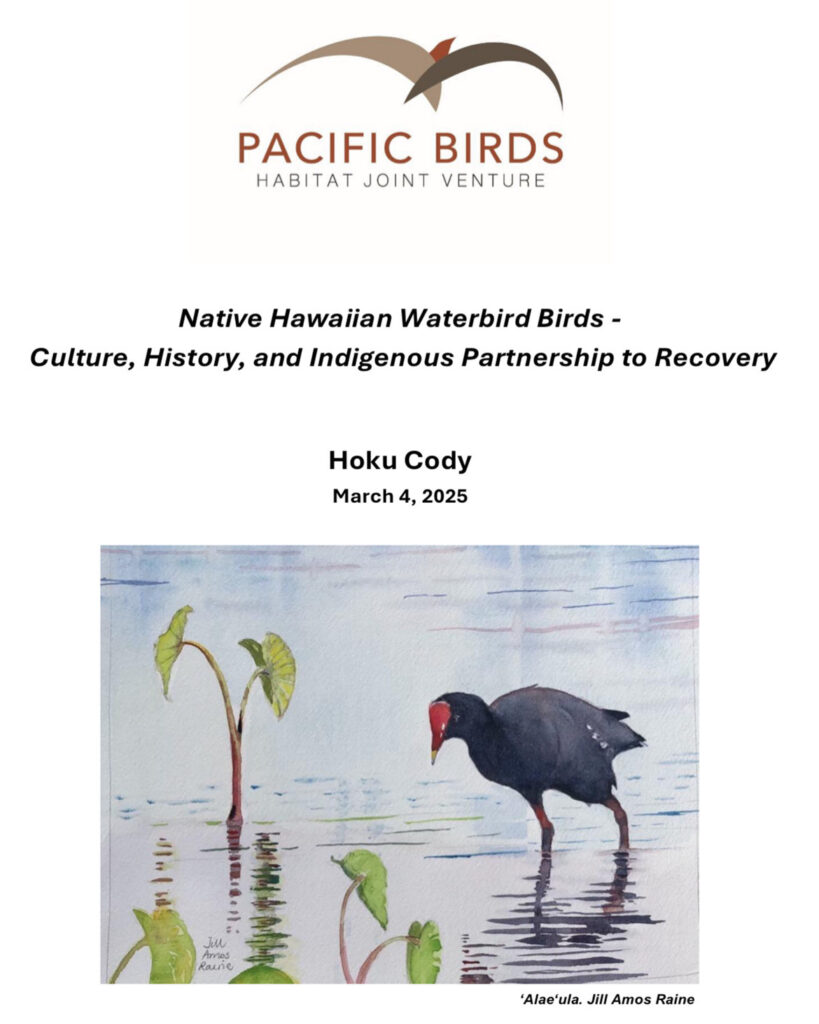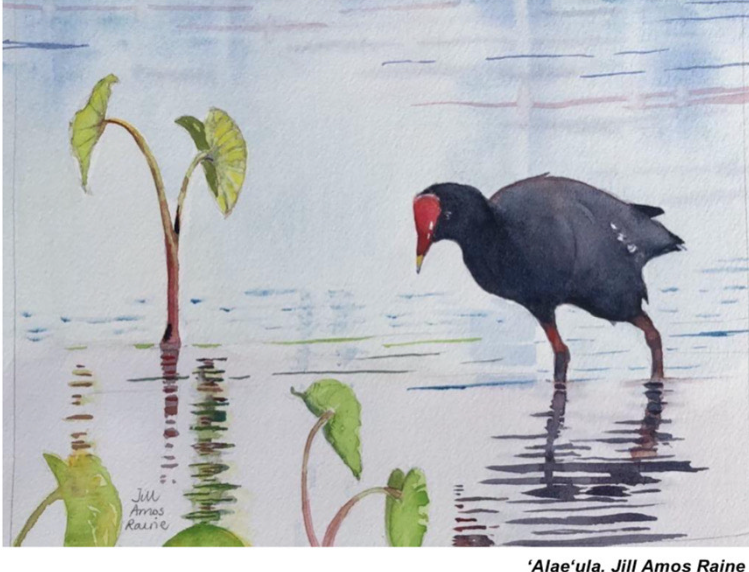
A new report by Hoku Cody explores how integrating loʻi (wetland taro patches) and loko iʻa (traditional fishponds) into waterbird conservation strategies can support a durable, sustainable future for Hawaiʻi’s native bird species. By aligning conservation with Indigenous practices, the report highlights opportunities to enhance habitat, provide sustainable food systems, and deliver ecosystem benefits to local communities.
Focusing on Hawaiʻi’s four endemic waterbirds and the nēnē goose, the report offers key recommendations for strengthening partnerships with Indigenous communities in the stewardship of these culturally and ecologically significant species.
https://pacificbirds.org/…/recovering-native-hawaiian…/
ホク・コディによる新たな報告書では、ロイ(湿地のタロイモ畑)やロコ・イア(伝統的な魚養殖池)を水鳥保全の戦略に取り入れることで、ハワイ固有の水鳥たちの持続可能で回復力のある未来を支えることができるであろうということが書かれています。また保全活動に、先住民の知恵とその導入を連携することで、生息地の回復、持続可能な食料の提供、生態系が地域社会に与える恩恵も主張されています。
この報告書は、ハワイの4種の固有水鳥とネネ(ハワイガン)に焦点を当て、これらの文化的・生態学的に重要な種の保護において、先住民族コミュニティとの協力関係を強化するための主要な提言を示しています。
